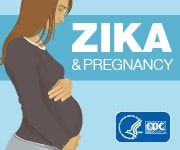About CDC’s Work on Opioid Use During Pregnancy

Reducing opioid misuse during pregnancy, as well as opioid-related harms for all people, including infants and children, are key parts of CDC’s response to the Opioid Crisis. On this page, you will get an overview of CDC’s research, programs, and other efforts to better understand opioid use during pregnancy.
CDC’s Division of Reproductive Health
CDC’s Division of Reproductive Health (DRH) is the focal point for issues related to reproductive, maternal, and infant health. CDC’s DRH is dedicated to improving the lives of women, children, and families through research, public health monitoring, scientific assistance, and partnerships. CDC’s DRH activities and programs provide support to organizations, institutions, providers, and consumers across the United States and around the world.
CDC’s DRH addresses opioid use during pregnancy by
- Gathering information using the Pregnancy Risk Assessment Monitoring System (PRAMS), to document substance use before and during pregnancy among people who recently gave birth.
- Building state capacity to better identify people with opioid use disorder (OUD) during pregnancy, as well as standardize care for mothers and neonatal abstinence syndrome (NAS)-affected infants through perinatal quality collaboratives (PQCs).
- Working with maternal mortality review committees to improve data quality and standardization for pregnancy-associated overdose deaths to inform prevention.
- Monitoring and reporting on the number of infants with NAS and the rates of opioid use disorder at delivery hospitalization.
CDC’s National Center on Birth Defects and Developmental Disabilities
CDC’s National Center on Birth Defects and Developmental Disabilities (NCBDDD) works to identify causes of birth defects, infant disorders, and developmental disabilities; finds opportunities to prevent them; and improves the health of those living with these conditions. By applying a public health approach that incorporates three essential elements—disease tracking, research to identify causes, and prevention research and programs—CDC’s NCBDDD can rapidly translate scientific findings into appropriate public health interventions.
With broad expertise and a longstanding focus on health outcomes among infants and children, CDC’s NCBDDD addresses opioid use during pregnancy by
- Monitoring and reporting the occurrence of prescription opioid use in people of reproductive age and pregnant people
- Collecting information to compare health outcomes of mothers and babies across medication for opioid use disorder regimens during pregnancy to inform best practice guidelines
- Consistently monitoring NAS across states that are implementing the new Council of State and Territorial Epidemiologists (CSTE) case definition to improve comparability of estimates
- Adapting existing ways to gather information about birth defects to also gather information about NAS
- Investigating possible associations between opioid exposure during pregnancy and birth defects
- Looking at prenatal substance use and the child welfare program
- Examining longer-term outcomes among children born with NAS in the United States
Learn more about NCBDDD’s efforts to address opioid use disorder during pregnancy.
Multicenter collaborative projects
Opioid Use Disorder, Maternal Outcomes, and Neonatal Abstinence Syndrome Initiative (OMNI)
CDC’s Division of Reproductive Health led the OMNI project, supporting state teams through a learning community framework. This Initiative worked to implement policies and programs to address opioid use among pregnant and postpartum people, as well as infants prenatally exposed to opioids. As part of this project, CDC’s NCBDDD helped to build state and local capacity so data can be used to understand community needs, address policy gaps, and identify best practices.
- Assessing Sustainability of State-Led Action Plans for the Opioid Use Disorder, Maternal Outcomes, and Neonatal Abstinence Syndrome Initiative Learning Community, 2018–2021
- A Field Placement Approach to Enhance State and Local Capacity for Opioid-Related Issues Affecting Pregnant and Postpartum People and Infants Prenatally Exposed to Opioids and Other Substances
- Framework for States Working to Improve Outcomes for Vulnerable Populations: The Opioid Use Disorder, Maternal Outcomes, and Neonatal Abstinence Syndrome Initiative Learning Community
- State Strategies to Address Opioid Use Disorder Among Pregnant and Postpartum Women and Infants Prenatally Exposed to Substances, Including Infants with Neonatal Abstinence Syndrome
NAS surveillance case definition
CDC collaborated with CSTE in their development of a public health case definition for monitoring the number of infants born with NAS. Using consistent criteria to define this condition for public health reporting can help ensure quality data are collected that can be compared across geographic areas.

